Since you clicked this post, you're probably at the age when you start to worry about aging skin – well, you should. The rate of collagen (the protein molecules that hold our skin together, keep from sagging and wrinkling) production starts to decrease at the age of 21, but don't freak out. The good thing is that we can do something to delay it by (here comes the overused phrase) Proper Diet And Exercise and wait for it – proper choice of moisturizers, sunscreens, serums, night creams, and all that beauty shebang.
The beauty industry has already filled its shelves with so many anti-aging products that promise you the elixir of youth, and choosing products that actually work could drive you nuts. Here, I'll share the active ingredients that have been proven by science to work. You still have the freedom of what brand to use, but knowing the right ingredients will definitely narrow down your choices.
This is a long read, so let's start….
The importance of Retinol has long been discovered during World War I. They found out that the deficiency of this compound in the body gives rise to xerosis (abnormal drying of skin) and follicular hyperkeratosis. [1]
Topical Retinoic acid, when added in skincare products, is believed to delay skin aging through the following mechanisms:
- Thickening of the epidermis
- Compaction of the stratum corneum- the other most layer of the skin
- Biosynthesis of glycosaminoglycans –these molecules bind 1000 times their weight with water, keeping the skin moisturized (moisture is everything when you want to keep your skin from wrinkling)
- Minimizes the damage caused by the sun's UV by interrupting the process of collagen and elastin degradation during UV exposure.
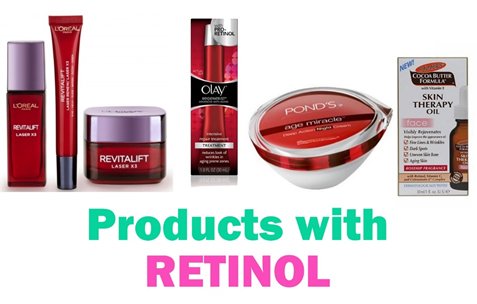
How To Use Retinol:
Retinol can come in other derivatives like retinoic acid or retinyl palmitate. Retinol is best for hours when left in the skin; hence, look for cream, serum, or gel formulations. Retinols formulated in the facial wash aren't really of much help.
How to look for Retinol in products in the ingredient list:
- Retinyl acetate – a natural form of Retinol
- Retinyl palmitate – a synthetic form
- Retinaldehyde – a synthetic form
- Vitamin A propionate
2. Vitamin C & E
Vitamin C
Vitamin C benefits the skin by:
- Acting As Antioxidants.
-Vitamin C can scavenge free radicals in our body to keep them from attacking healthy cells.
- Helping In Collagen Production
Our body requires vitamin C to build collagen fibers that give the skin structure and firmness.
3. Brightening Dark Spots
- Vitamin C helps in inhibiting the production of melanin, which causes the darkening of the skin.
Since vitamin C oxidizes easily, it is available in different derivatives to stabilize the ingredient. Look for any of the following ingredients in the product labels:
• Ascorbic acid
• Sodium Ascorbate
• Ascorbyl Palmitate
• Sodium Ascorbyl Phosphate
• Magnesium Ascorbyl Phosphate (MAP)
• Tetrahexyldecyl Ascorbate (THDA) or
• Ascorbyl Tetraisopalmitate
• Ascorbyl Glucosamine
• Ascorbyl Glucoside
• Ascorbyl Methylsilanol Pectinate
Vitamin C + E
Vitamin E is a good addition to skincare routine because it also acts as an antioxidant. As vitamin E scavenges free radicals, it becomes oxidized and hence becomes inactive. Vitamin C can reduce oxidized Vitamin E, making it active again. [2]. Vitamin C & E is a potent mixture of antioxidants.
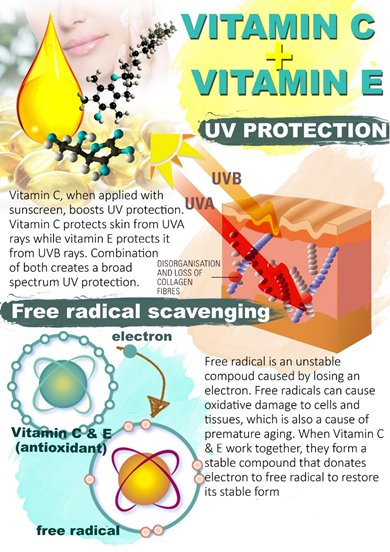
Vitamin E is listed in your skincare product ingredients as the following:
- d-alpha-tocopherol
- d-alpha-tocopherol acetate
- dl-alpha-tocopherol
- dl-alpha-tocopherol acetate
The difference between "d" and "dl" vitamin E is that the former is derived from natural sources while the latter is from synthetic sources. Vitamin E derived from natural sources is said to be more potent than synthetic ones, but both have antioxidant properties [6].
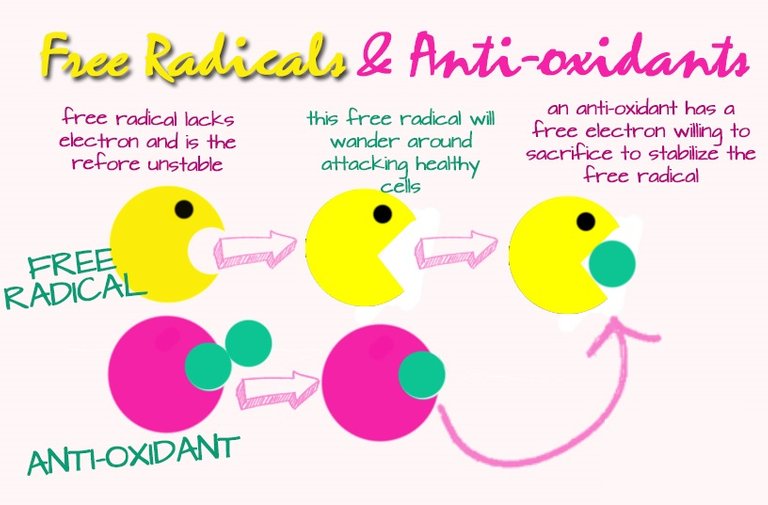
Vitamin C & E is not synthesized in the body in adequate amounts and should be obtained from external sources either from the diet, or from topical formulations (in the case of skin nutrition). Remember that an antioxidant loses its activity after scavenging free radicals and therefore must be replenished daily, both nutritionally and topically.
3. Hydrating Ingredients
Skin aging is associated with moisture loss. It is crucial to choose products with excellent hydrating properties. Hydrating ingredients can be sourced from anywhere, from the most exotic flowers of the Amazon to the extract of the rarest cactus in Africa. Competition in the cosmetic industry is tough, and marketing new and unusual ingredients is a way to intrigue and excite consumers. These ingredients, however, may give the same moisturizing/hydrating effect as other cheaper alternatives; hence it is important to know what to look for in your skincare products. These ingredients may have different mechanisms, but all works on keeping the skin hydrated. Some of the most effective hydrating agents are the following:
Niacinamide
also referred to as vitamin B3, studies have demonstrated the efficacy of niacinamide in skin brightening (or lightening of dark spots), anti-inflammatory effects, and has also shown to increase biosynthesis of ceramides – the major components of skin's outer layers [3]
Ceramide
This may be listed as ceramide AP, ceramide EOP, ceramide NG, ceramide NP, ceramide NS, phytosphingosine, and sphingosine in product ingredients. Ceramides are an important class of molecules necessary for skin barrier function. They play an important role in preventing atopic dermatitis and psoriasis. [4]
Cholesterol
a good stabilizer and water-binding agent
Hyaluronic acid
This is the key molecule in skin moisture because of its unique capacity to bind and retain water molecules. [5]
Glycerol/Glycerine
a cheap ingredient with a very competitive moisturizing effect. It can achieve the same results as other "luxurious" botanical extracts in the market.
4. Exfoliating Agents
When dead skin cells are shed off from our skin in a slower rate that it should, the layer of dead skin cells becomes thicker which makes the skin appear dark, dull with uneven discoloration. Exfoliants assist the shedding process and reveal younger skin cells as dead skin cells are removed. Here are some of the effective exfoliating ingredients:
Alpha Hydroxy Acids
Glycolic acid, Lactic acid, mallic acid and mandelic acid fall under this category. Glycolic acid is the most common AHA and has been proven in different studies to be an effective exfoliant. Glycolic acid also binds with water very well, so it has excellent hydrating effects on skin. The efficacy of glycolic acid is believed to be attributed by its small molecular size, relative to other AHA's. Lactic acid, mallic acid and mandelic acid, are said to be "milder" alternative to gycolic acid because they penetrate the skin much slower, decreasing the risk of irritation for people with sensitive skin.
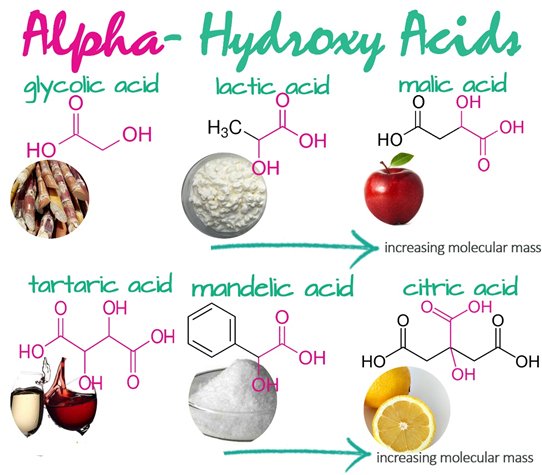
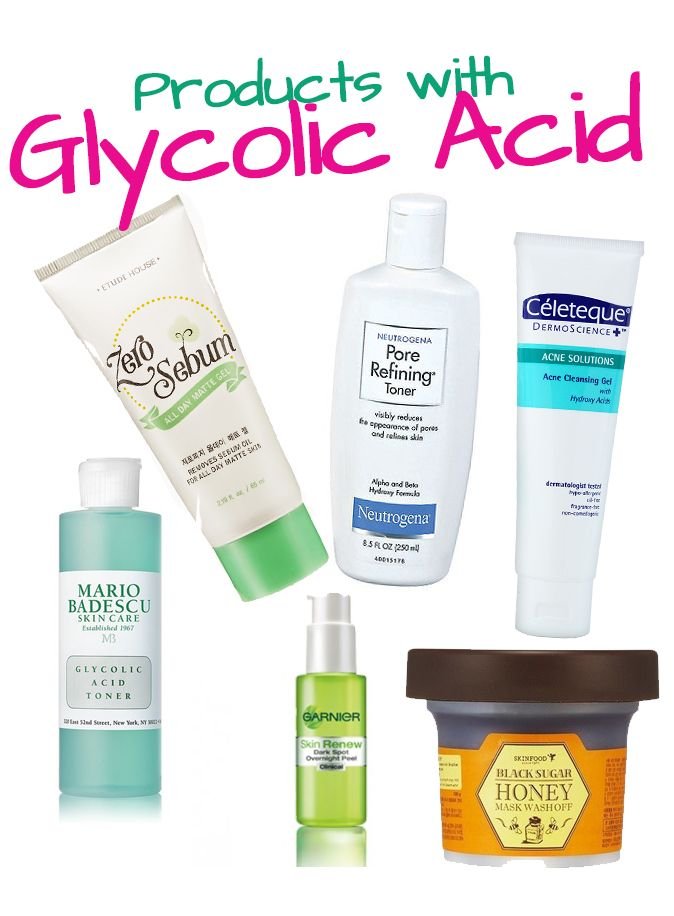
Fruit Enzymes
Enzymes derived from fruits such as Papain (Papaya) and Bromelain (Pineapple) are the most commonly used enzyme used for exfoliation. These enzymes, targets proteins that surrounds the corneocytes (corneocytes are the skin cells that constitute most of the outer skin layer) and cuts them in to smaller chain by weakening their bond towards each other (Enzymes that targets proteins are called protease). Sloughing of corneocytes then results to their separation from the surface by a process called desquamation. Papain works well at a pH of 5.0 to 9.0 while Bromelain is active from pH 3.0 to 6.5 which means, they don't have to be necessarily acidic to maintain its potency, unlike AHA's.
In many Asian countries, skin care products formulated with papaya populate the whitening department. Papaya whitens the skin by exfoliating dull skin cells, revealing the newer ones. Care should be taken, however, for most papaya astringents and toners available in the market as they high levels of ethyl or isopropyl alcohol. It can be effective in whitening but alcohols can dehydrate skin and may even worsen oily skin.
5. Sunscreen
Because 80 to 90% of the visible signs of aging is caused by UV damage, I would like to emphasize that Sunscreens are still the best anti-aging product. Sunscreens should be at least SPF 30 to provide good UV protection. It should be a part of your daily morning routine. It is important to remember though, that even when wearing sunscreen, excessive sun exposure should still be avoided, where possible. Umbrella and sunglasses are best ways to reinforce your sun protection.
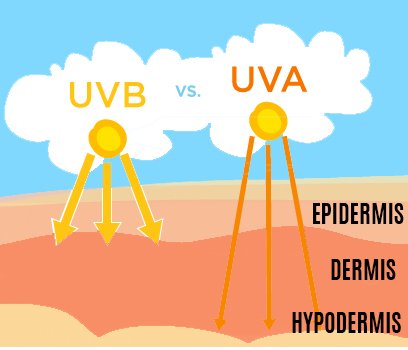 UVA can penetrate deeper in to the dermis, which can be significantly reduced by sunscreens
UVA can penetrate deeper in to the dermis, which can be significantly reduced by sunscreens
Take Home
• There is no single miracle product that can effectively delay visible signs of aging – it is through of healthy diet, exercise and proper skin care routine
• Product as simple as an effective moisturizer, when applied regularly, goes a long way in delaying the appearance of wrinkles
• Most anti-aging ingredients has multiple functions (i.e. exfoliant, antioxidant, whitening agent, etc). Many products are not labeled as "anti-aging" but still compliment in delaying the appearance of wrinkles. Knowing the right ingredient is the key since most anti-aging products are marketed as luxury products
.
• Wear sunscreen everyday
REFERENCES
[1] Siddharth Mukherjee, et al (2006) Retinoids in the treatment of skin aging: an overview of clinical efficacy and safety Clin Interv Aging. 2006 Dec; 1(4): 327–348
[2] Chan AC (1993) Partners in defense, vitamin E and vitamin C. Can J Physiol Pharmacol. 71: 725–731
[3] Solis, J.N. et al (2011) A Double-Blind, Randomized Clinical Trial of Niacinamide 4% versus Hydroquinone 4% in the Treatment of Melasma, Dermatol Res Pract. 2011; 2011: 379173. Published online 2011 Jul 21
[4] . Meckfessel, M.H. & Brandt S., (2014) The structure, function, and importance of ceramides in skin and their use as therapeutic agents in skin-care products, American Academy of Dermatology, Inc. pp 1-8
[5] Eleni Papakonstantinou et. Al (2012) Hyaluronic acid-A key molecule in skin aging, Dermato Endocrinology 4:3, 253–258
[6] ( http://www.livestrong.com/article/545591-what-is-the-difference-between-d-alpha-dl-alpha-tocopheryl-acetate/)






